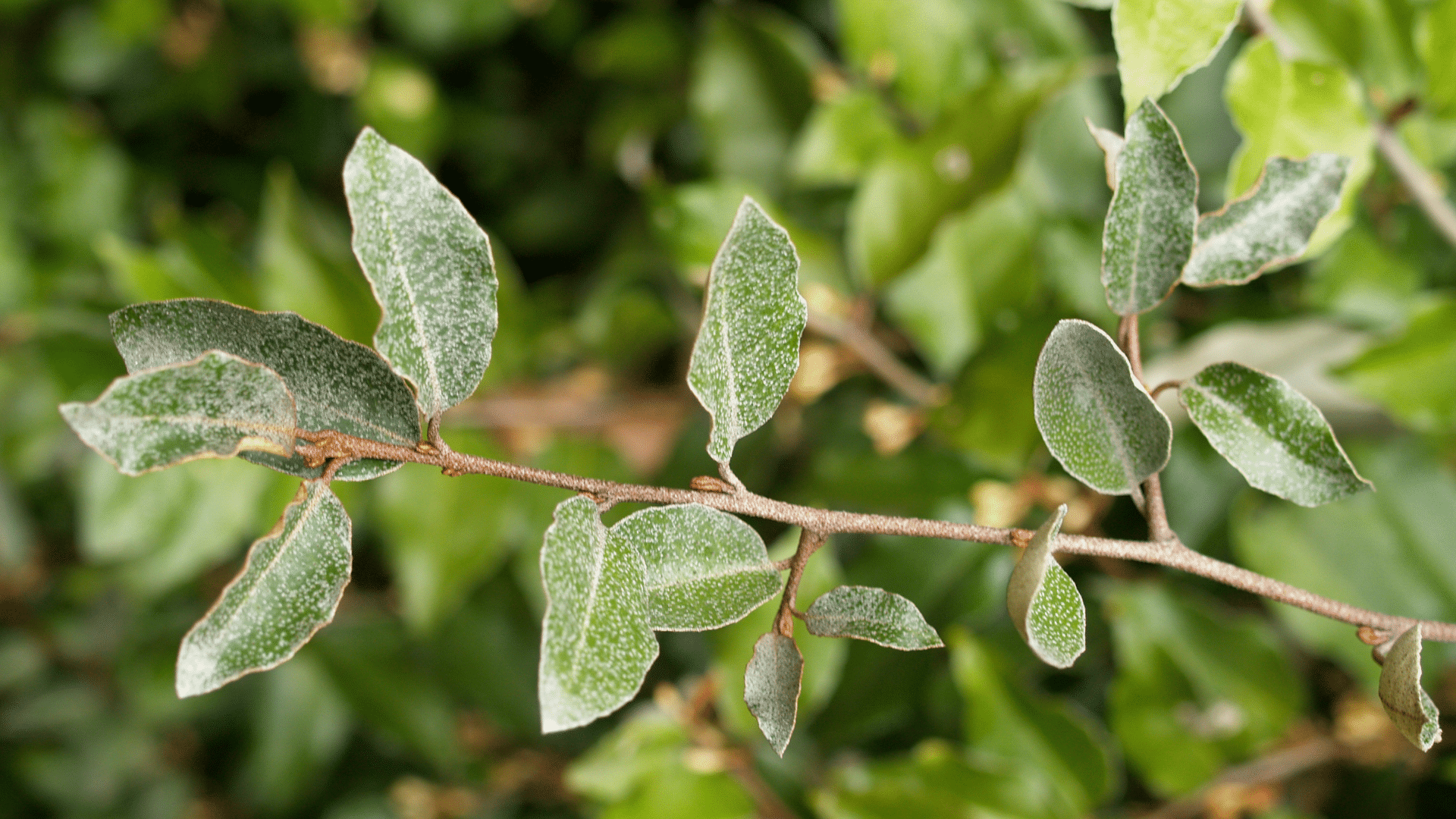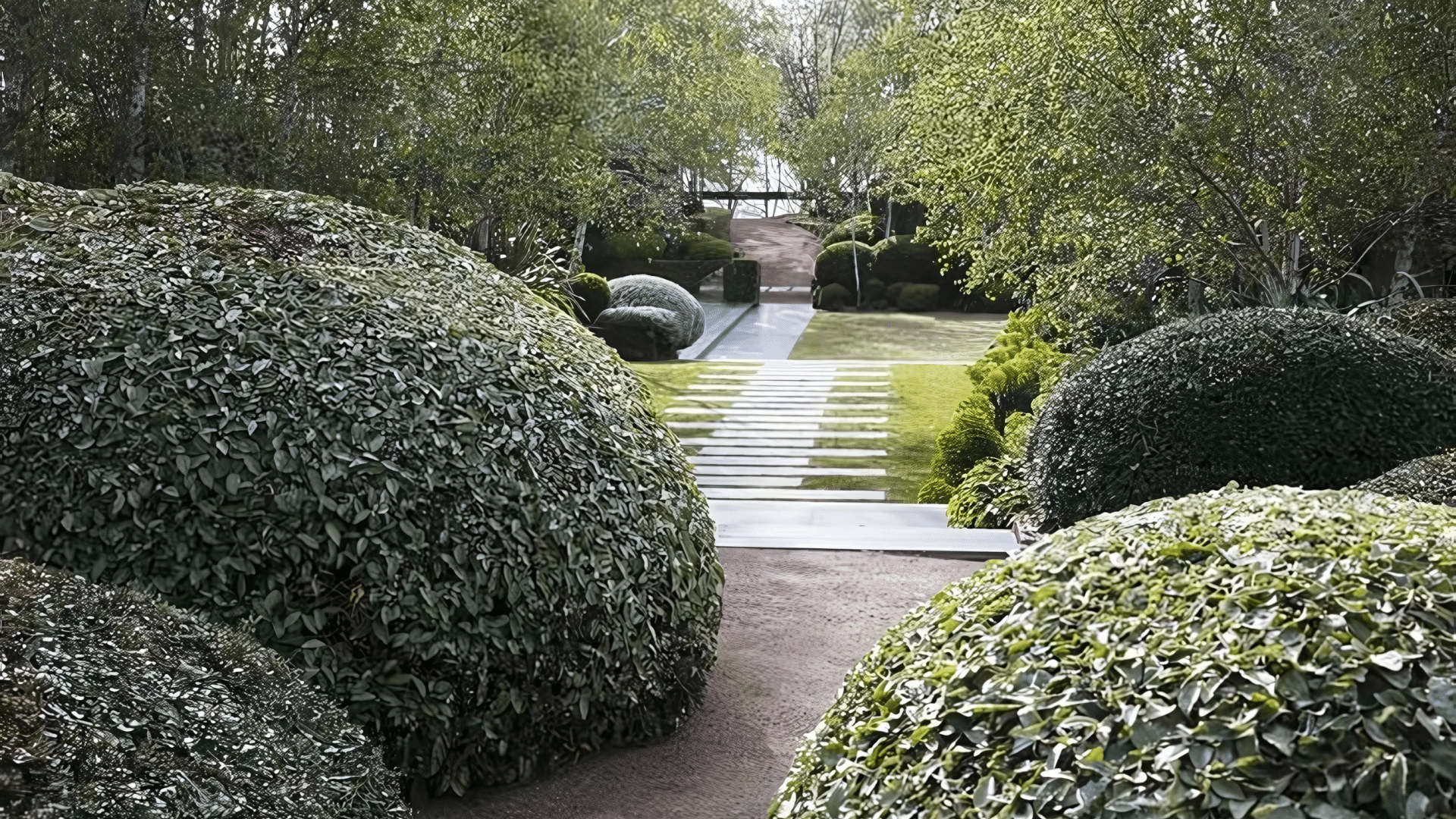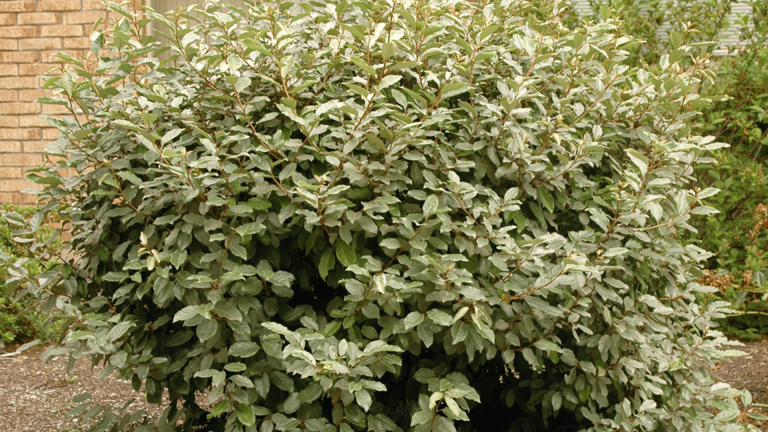Elaeagnus is a strong and easy-to-grow plant that many people use in their yards. It has shiny leaves, small flowers, and can grow fast. Some types are used for hedges, while others are grown for their pretty look.
This plant can handle poor soil, dry weather, and even salty air near the coast. It also helps the soil by adding nitrogen, which is good for other plants around it. In this guide, you’ll learn the basics of how to grow and care for Elaeagnus.
We’ll explain where to plant it, how much water it needs, when to trim it, and more. If you want a tough plant that still looks nice, Elaeagnus is a great choice. Keep reading to learn how easy it is to grow this useful and beautiful shrub in your garden.
What Is Elaeagnus?

Elaeagnus is a group of shrubs and small trees. These plants are strong, easy to care for, and grow in many places. People also call them silverberry or oleaster. Some types stay green all year (evergreen), while others drop their leaves in fall (deciduous). They are often used in hedges, borders, or as stand-alone plants.
The leaves are shiny, with a silvery or gray look. Some types have golden or variegated patterns on their leaves. Elaeagnus also has small, sweet-smelling flowers and some types grow berries in the fall.
Why Choose Elaeagnus for Your Garden?
There are many good reasons to grow Elaeagnus in your yard:
-
It grows fast and fills in spaces quickly.
-
It can handle poor soil and dry weather.
-
It is easy to prune and shape.
-
It helps other plants by adding nitrogen to the soil.
-
Some types grow berries that feed birds.
-
It can be used as a privacy hedge or windbreak.
Popular Types of Elaeagnus

Some common types of Elaeagnus are:
Elaeagnus × ebbingei
This is an evergreen type. It grows fast and can be used as a hedge or screen. It has silvery-green leaves and small, fragrant flowers in the fall.
Elaeagnus pungens
This type has strong branches and thick leaves. It is very tough and can handle heat, wind, and salty air. The ‘Maculata’ variety has bright yellow centers on its leaves.
Elaeagnus angustifolia (Russian Olive)
This type has long, narrow leaves that look silver. It grows into a small tree and produces yellow flowers and small fruits.
Elaeagnus multiflora (Goumi)
This type has small red berries that are edible. The berries taste tart and sweet. This plant is also good at fixing nitrogen in the soil.
Where to Plant Elaeagnus

Picking the right spot to plant your Elaeagnus is important. This plant is tough, but it will grow best if it has the right space, sun, and soil.
1. Sunlight: Elaeagnus grows best in full sun or light shade. It needs at least 4–6 hours of sunlight each day. In shady spots, it may grow slower or become thin.
2. Soil: This plant is not picky about soil. It can grow in clay, sandy, or rocky soil. It does best in well-draining soil. If the soil is heavy and stays wet, add sand or compost to help it drain better.
3. Space: Elaeagnus can grow wide, so give it space. If you’re planting a hedge, place each plant 4 to 6 feet apart. For a single shrub, give it at least 5 feet of space on all sides.
How to Plant Elaeagnus
Planting Elaeagnus is easy if you follow a few simple steps. It’s a tough plant, but getting it off to a good start will help it grow strong and fast.
Step 1: Pick the Right Spot
Choose a place that gets at least 4 to 6 hours of sunlight each day. Make sure the spot has room for the plant to grow wide and tall. If you’re planting a hedge, leave 4 to 6 feet between each plant.
Check the soil to make sure it drains well. If water sits on top of the soil after it rains, it may be too wet for Elaeagnus.
Step 2: Dig the Hole
Dig a hole that’s twice as wide as the plant’s root ball and just as deep.
-
A wide hole helps the roots spread out.
-
Don’t dig too deep—make sure the top of the root ball will be level with the ground.
Step 3: Prepare the Plant
Take the Elaeagnus out of its pot or remove it from its wrapping.
-
Gently loosen the roots with your hands, especially if they’re packed tight.
-
If roots are circling around the bottom, break them up a little so they don’t keep growing in a circle.
Step 4: Place the Plant in the Hole
Set the plant in the hole so the top of the root ball is level with the ground. If it’s too low or too high, take it out and add or remove soil underneath.
Turn the plant so it’s facing the way you want, especially if it has a fuller side.
Step 5: Fill in with Soil
Begin filling the hole with the soil you dug out. As you add soil, press it down gently to remove air pockets, but don’t stomp on it.
-
You can mix in a little compost if you want, but it’s not needed.
-
Don’t add fertilizer when planting. Elaeagnus doesn’t need it to get started.
Step 6: Water the Plant
Water the plant right after planting, even if the soil is already damp. This helps the roots settle and removes any remaining air pockets.
Add a 2- to 3-inch layer of mulch around the base of the plant, but don’t let the mulch touch the trunk. This helps keep in moisture and keeps weeds away.
Caring for Elaeagnus
Elaeagnus is a strong plant, but a little care helps it grow better and stay healthy.
Watering Elaeagnus
Elaeagnus is drought-tolerant once it is fully grown. But new plants need water to get started.
-
First 2–3 months: Water 2–3 times a week.
-
After that: Water once a week if it doesn’t rain.
-
Mature plants: Only need water during long dry spells.
Check the soil often. If the top 2 inches are dry, it’s time to water.
Fertilizing Elaeagnus
Elaeagnus usually doesn’t need much fertilizer, but feeding it once a year can help it grow faster.
-
Use a balanced slow-release fertilizer in spring.
-
Compost or aged manure also works well.
-
Avoid over-fertilizing, which can lead to weak growth.
Pruning and Shaping Elaeagnus
Pruning helps keep Elaeagnus neat and healthy. It also controls its size.
-
Best time to prune: Late winter or early spring.
-
How to prune: Cut off dead or broken branches. Trim back long or out-of-place branches.
-
For hedges: Shape the top and sides after new growth appears.
Elaeagnus can grow large quickly, so regular trimming helps keep it under control.
Growing Elaeagnus as a Hedge
Elaeagnus makes a great hedge for privacy or blocking wind.
-
Plant shrubs 4–6 feet apart.
-
Prune the tops once they reach your desired height.
-
Keep the sides trimmed so it stays thick and full.
Elaeagnus hedges grow fast and can reach 10–15 feet tall if not trimmed.
Using Elaeagnus in Landscape Design

Elaeagnus is a flexible plant that fits many styles:
-
Use it as a tall background plant behind flowers.
-
Plant it along fences or property lines for privacy.
-
Mix it with other shrubs to add color and texture.
-
Use it near driveways or walkways for a soft border.
Its silver and gold leaves can brighten up green spaces.
Pests and Diseases
Elaeagnus is tough and doesn’t have many problems, but here are a few to watch for:
Scale Insects
These small bugs suck sap from the plant. They can make leaves yellow and drop off.
What to do: Wipe them off or spray them with insecticidal soap.
Leaf Spot
This disease causes brown or black spots on leaves.
What to do: Trim off bad leaves and avoid watering from above.
Root Rot
Too much water can cause root rot.
What to do: Make sure the soil drains well. Don’t overwater.
Growing Elaeagnus in Pots

Elaeagnus can grow in large pots, especially the smaller or slow-growing types. This is a good option if you have a small yard or patio or want to move the plant around.
Choosing the Right Pot
-
Use a pot that is at least 18–24 inches wide and deep.
-
Make sure the pot has drainage holes at the bottom.
-
Pick a heavy pot or add some weight so it doesn’t tip over in the wind.
Soil and Planting
-
Use a well-draining potting mix. You can mix in some sand or perlite to help drainage.
-
Plant it at the same depth as it was in the nursery pot.
-
Press the soil down gently and water it well after planting.
Care for Potted Elaeagnus
-
Water more often since pots dry out faster than garden soil.
-
Place the pot in a sunny spot with at least 4–6 hours of light.
-
Feed with a slow-release fertilizer once in spring.
-
Prune as needed to keep it the right size for the pot.
If your plant grows too big, you can trim it or move it to a bigger pot. If you have space, you can also plant it in the ground later.
Elaeagnus and Wildlife
Elaeagnus is great for attracting wildlife. It helps birds, bees, and other good insects in your yard.
- Food for Birds: Some types of Elaeagnus grow small berries that birds love to eat. These berries come in late summer or fall and give birds food during colder months.
- Shelter and Nesting: Elaeagnus grows thick and bushy, which makes it a great hiding place for birds. Many birds also build nests in its branches. It gives them shelter from wind and rain.
- Flowers for Pollinators: The flowers are small but full of nectar. They bloom in spring or fall, depending on the type. Bees, butterflies, and other pollinators are drawn to the sweet smell.
- Benefits for the Yard: Growing Elaeagnus helps local wildlife. In return, it controls bugs and makes your garden more active and healthy.
Elaeagnus and Nitrogen Fixing
Elaeagnus can take nitrogen from the air and put it into the soil through its roots. This helps improve the soil for other nearby plants.
-
This is called nitrogen fixing.
-
It makes Elaeagnus a great companion plant for trees and flowers.
You don’t need to do anything special—it does this on its own!
When to Plant Elaeagnus
The best time to plant Elaeagnus is in spring or fall.
-
In spring, the weather is warming up, and the plant has time to grow strong roots before summer.
-
In the fall, the cooler air and warm soil help roots settle before winter. Plant early enough so it’s not too cold.
You can also plant in summer if you water often. Avoid planting during very hot or very cold weather. If the ground is frozen or too wet, wait until it dries out.
Tip: Always check the soil. If it’s soft and not frozen or soaked, you’re good to go
How Fast Does Elaeagnus Grow?
Elaeagnus grows quickly. Some types can grow 2–3 feet per year.
-
A small plant can become a large hedge in just a few years.
-
With good care, it will grow even faster.
This makes it perfect for filling in empty spaces fast.
Can You Eat Elaeagnus Berries?
Some types of Elaeagnus grow berries you can eat. Others are better left for the birds.
-
Elaeagnus multiflora (Goumi) has edible berries. They taste sweet and tart.
-
Only eat berries if you are sure of the type.
-
Wash all berries before eating.
Do not eat berries from unknown plants. Some may upset your stomach.
Elaeagnus in Coastal Areas
Elaeagnus grows well near the coast. It can handle salty air and sandy soil.
-
It’s a good choice for beach houses or homes near the ocean.
-
It helps stop soil from blowing away in windy spots.
Use it to create natural barriers or mix it with other coastal plants.
Winter Care for Elaeagnus
Elaeagnus is strong and can handle cold weather in most areas. But young plants may need a little extra care.
-
In late fall, add 2 to 3 inches of mulch around the base to protect the roots from frost.
-
If your area gets very cold (below 20°F or -6°C), you can cover young shrubs with frost cloth or burlap during freezing nights.
Avoid pruning in late fall because the winter cold can damage new growth. Mature plants usually don’t need any special care—they’ll bounce back in spring.
Tip: Check the plant after snow or ice. If branches are bent or broken, trim them back when the weather warms up.
Conclusion
Elaeagnus is a strong, easy plant that looks good and grows fast. It can handle heat, wind, dry soil, and even salty air. That makes it great for many types of yards. You can use it as a hedge, a screen, or just a nice-looking shrub. It also helps the soil by adding nitrogen, which is good for nearby plants.
Once planted, it doesn’t need much work. Water it well when it’s new, then let nature do the rest. A little pruning and one feeding each year are enough to keep it healthy. It’s also a good plant for birds and bees, which makes your yard more alive.
If you want a plant that fills space, adds color, and doesn’t need much care, Elaeagnus is a smart choice. It’s tough, useful, and beautiful all at once. With just a little time and care, it can become one of your favorite plants in the garden.













